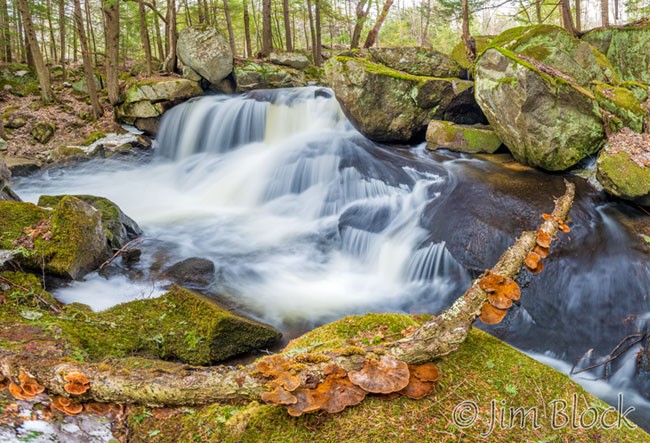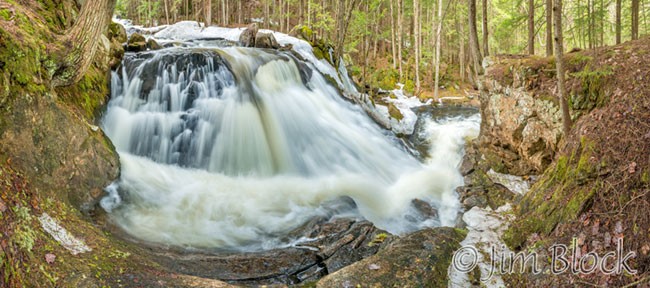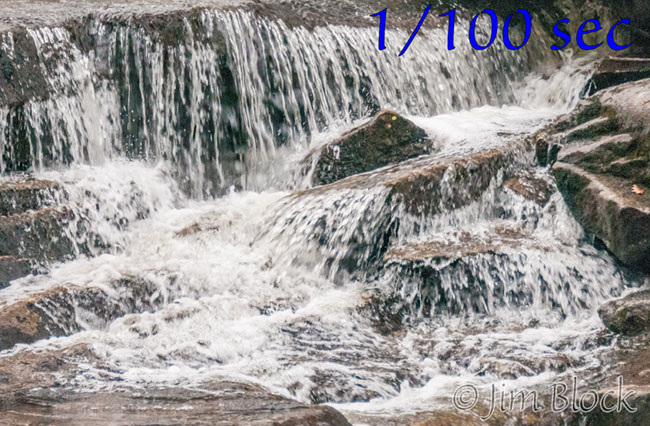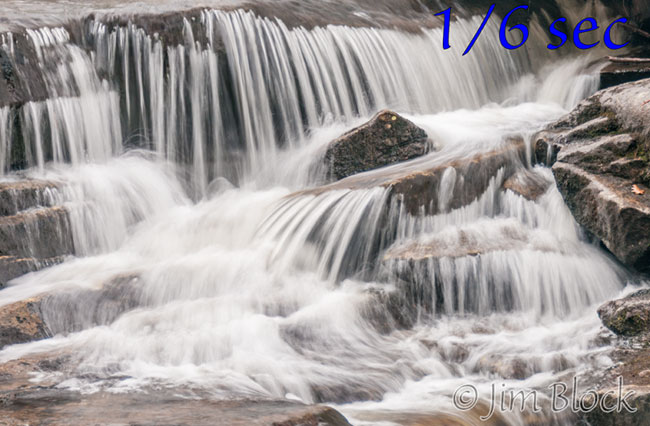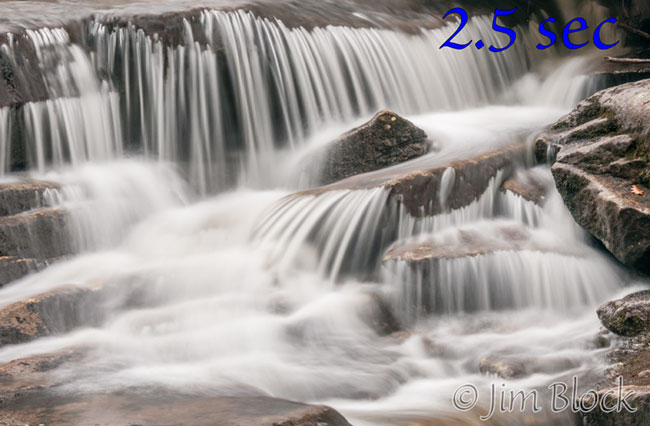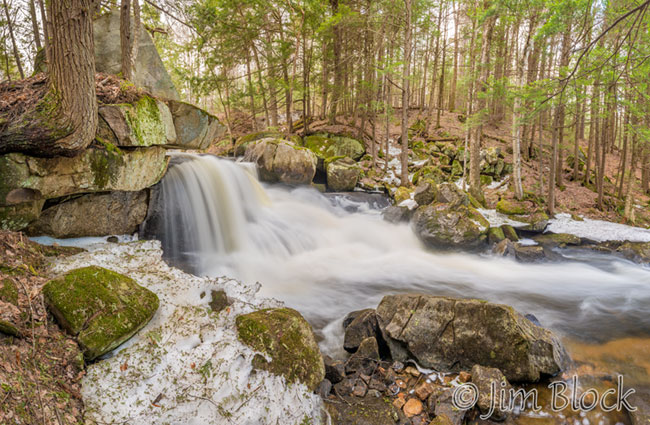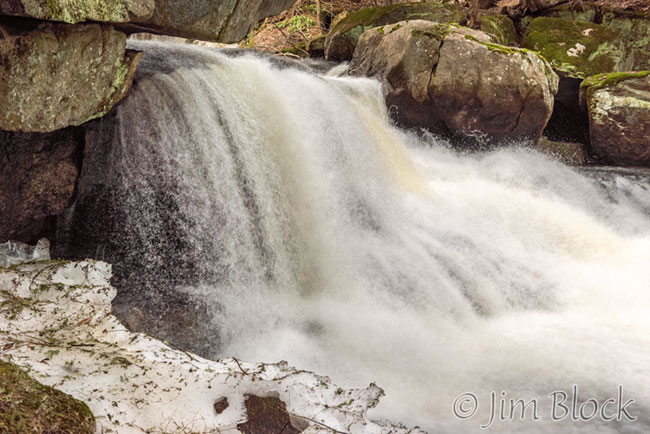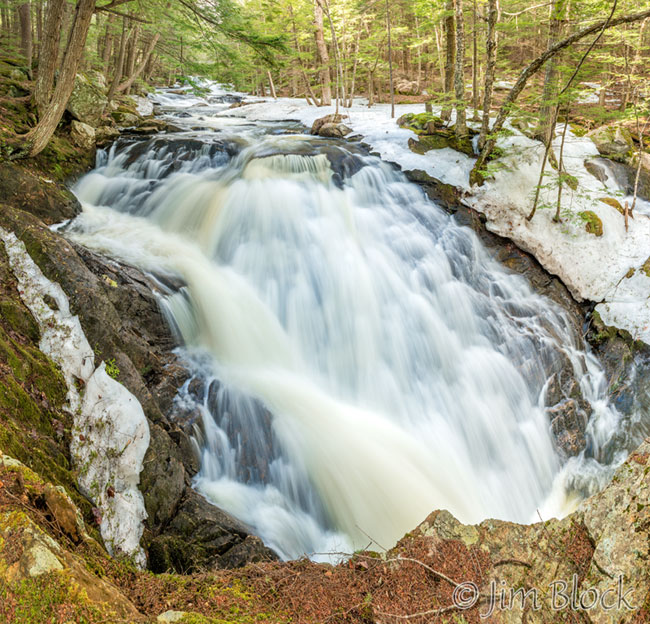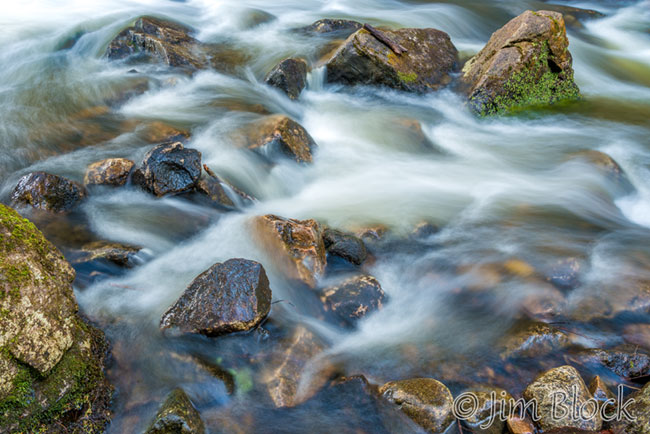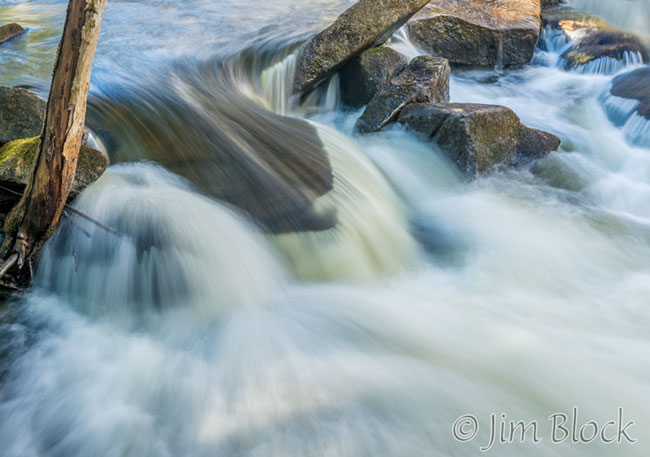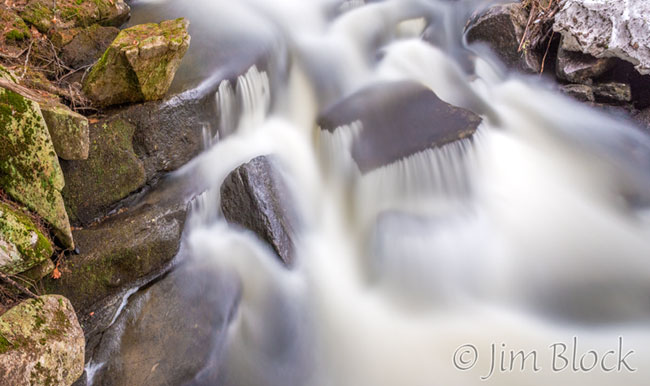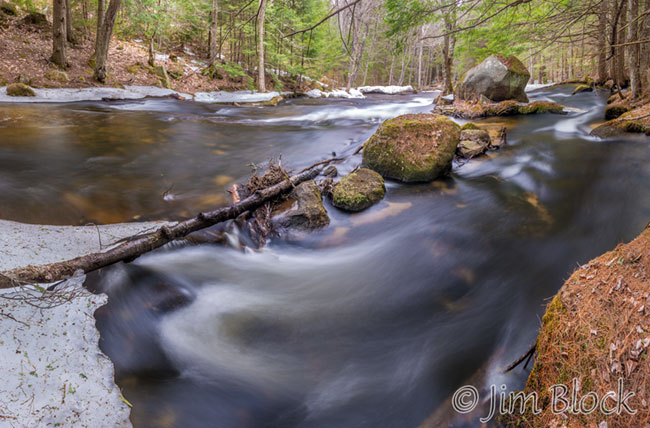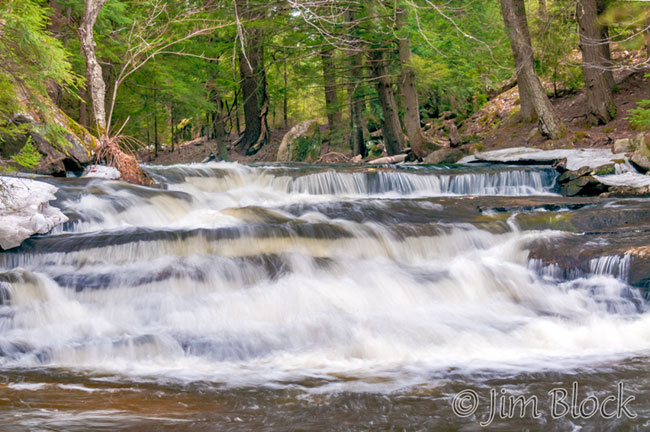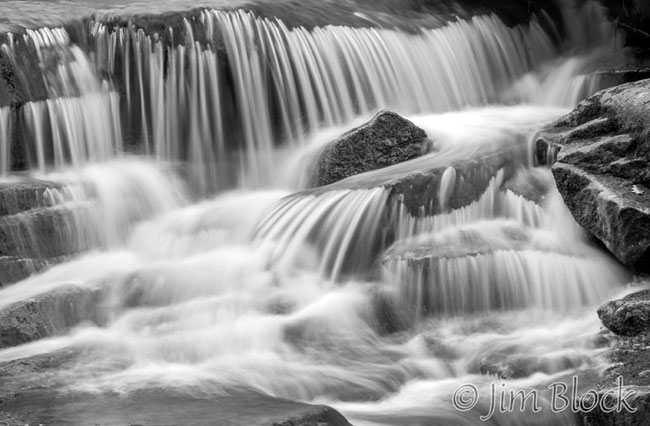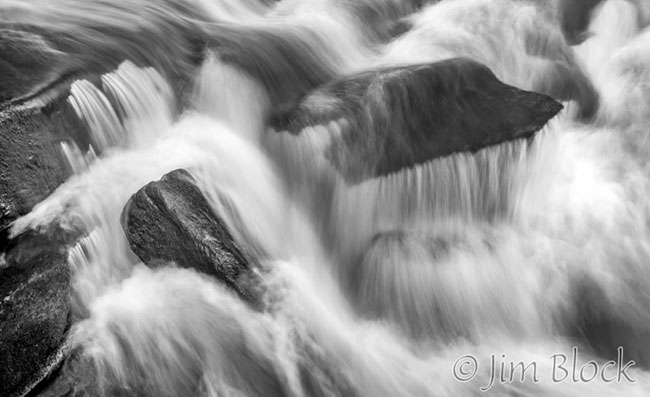This week, my Photography class is working on using shutter speed creatively and with a purpose. Although it may seem counterintuitive, the best way to control shutter speed is Aperture Priority. AP will always give a nominally correct exposure; Shutter Priority may not.
I decided to do the assignment I gave the class for the week, so I spent some time this weekend at one of my favorite spots, Bicknell Brook, to get some photos at long shutter speeds and to create more examples of the effect of shutter speed on moving water.
Downstream of the one-lane bridge, the water cascades over dramatic falls and glides rapidly down smooth ledges. Here is a view of the first falls below the bridge. If you click this image you will be taken to a page with a version that you can zoom in and pan around to explore.
Below the first falls is a beautiful natural sluice. You can see the first falls in the far left back.
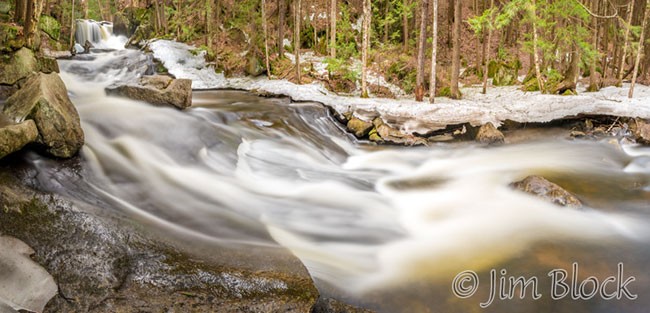
A bit farther downstream one stands on a small peninsula above the brook, seen in the photo below at the top right, admiring the largest falls along the stream. If you click this image you will be taken to a page with a version that you can zoom in and pan around to explore.
Upstream of the bridge I found a nice spot to make a series of shots to illustrate the effect of shutter speed as seen here.
The brook is more placid as one heads upstream with the exception of a beautiful step falls. The slide show above is of a small piece on the right side of this series of falls.
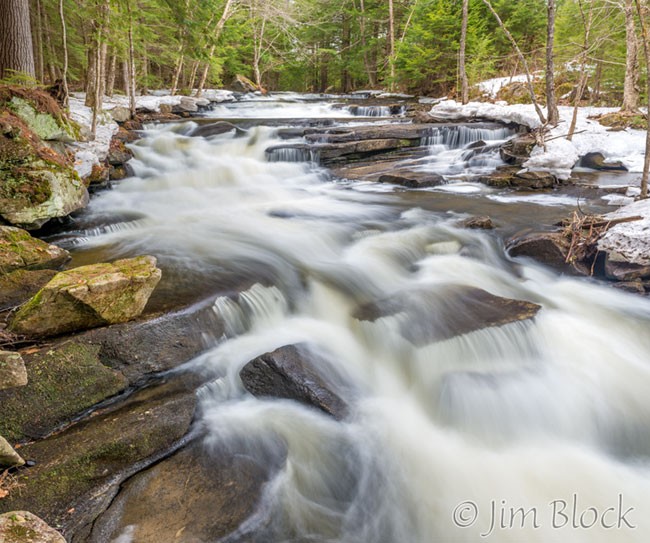
A large rock diverts the brook upstream of the step falls.
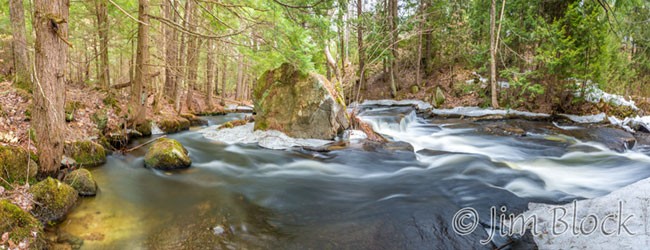
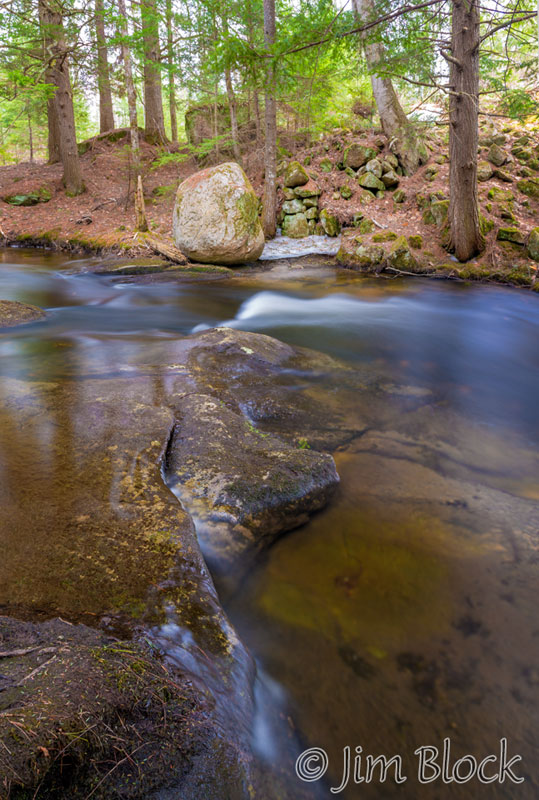
Some sections of the brook are so smooth that is seems there is not enough flow to cause the downstream drama. But the same volume of water flows past every stream cross-section each second. If this was not true the water would build up defying gravity until it was suddenly magically released. Perhaps I like photographing moving water so much because of my early education in fluid dynamics.
Please enjoy the slide show below of more photos I took a few days ago along Bicknell Brook.

